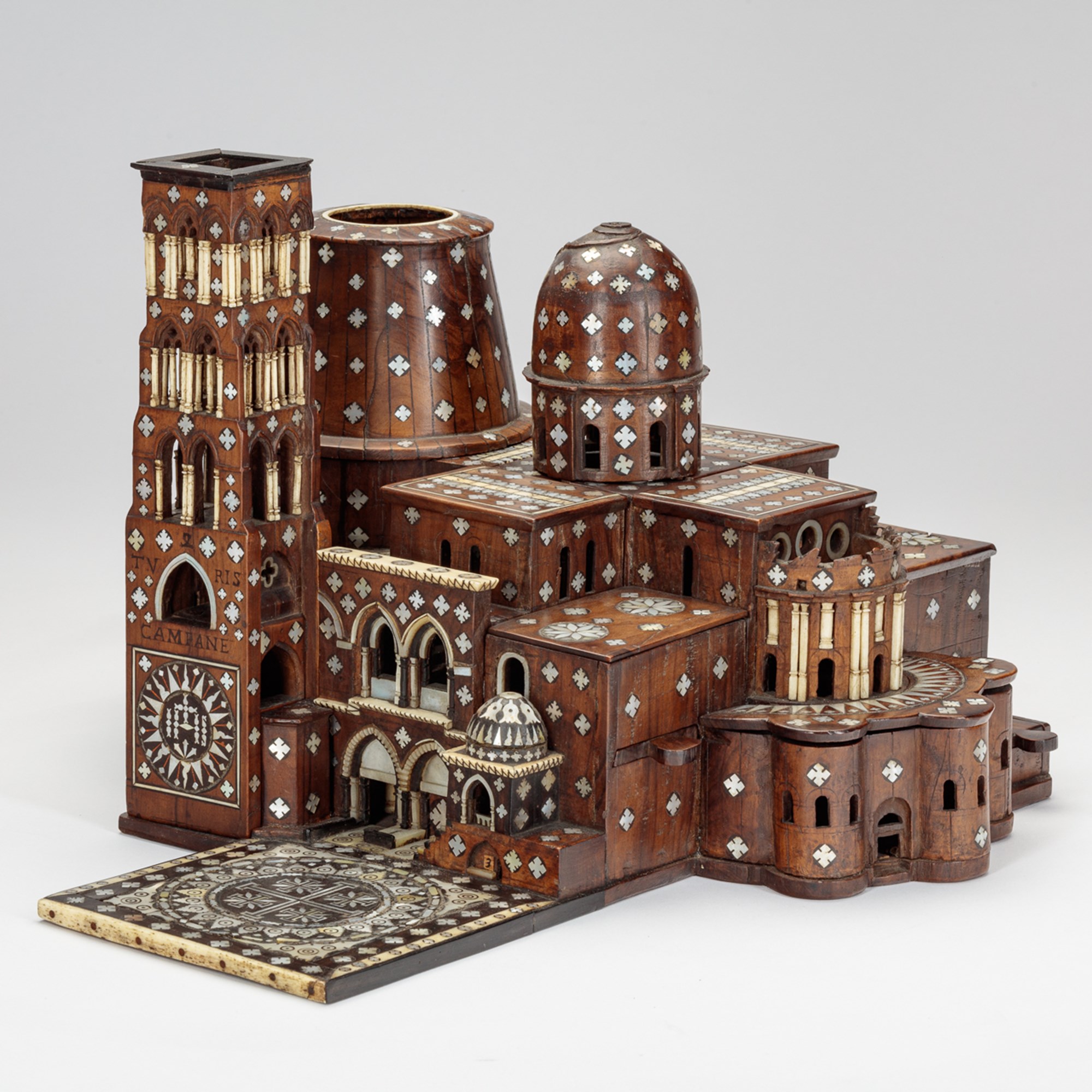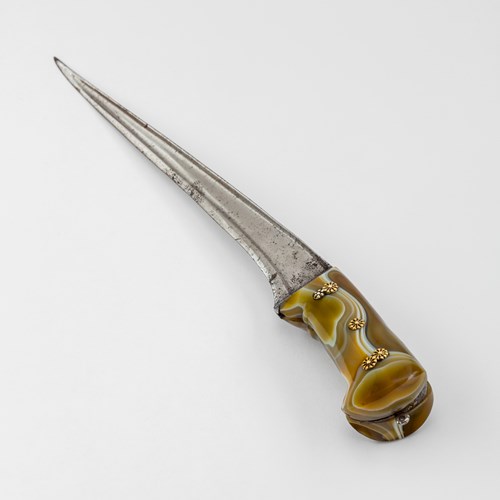Model of the Church of the Holy Sepulchre
Period 17th or 18th century
Origin Ottoman Jerusalem
Medium Olive wood, inlaid with mother-of-pearl, ivory, and ebony
Dimension 23.5 x 33.5 x 39.5 cm (9¹/₄ x 13¹/₄ x 15¹/₂ inches)
The square courtyard floor is inlaid with ivory and mother-of-pearl design to imitate a mosaic floor and it also has a cross pattée in the centre within a circle of inlaid decoration and outer square border of inlaid ivory decoration. On the walls of the church there are inlaid mother-of-pearl quatrefoils and rosettes. The detachable dome has a spiral flight of steps carved into the wood on one side. Furthermore, the square bell tower has five tiers with arched windows that are defined by fine ivory columns.
Craftsmen working in Franciscan monasteries in the Holy Land may have been influenced by the detailed plans and drawings made by Bernardino Amico, a Franciscan friar, who arrived in Jerusalem in 1593. Amico’s architectural surveys of the main shrines and chapels in the area were published in his book, Tratto delle piante & immagini de sacri edifizi di Terra Santa (1609), where he emphasised that his detailed account of the Church of the Holy Sepulchre aimed to provide a working scheme to anyone who wished to build a model of it.1
There are similar models of the Church of the Holy Sepulchre held in several prestigious institutions, including: the Ashmolean Museum of Art and Archaeology in Oxford (Accession Number: AN1887.3089.2009.2), the British Museum in London (Accession Number: OA.10338), the Museum of Fine Arts Boston (Accession Number: 2016.91), the Museum of the Order of St John in London (Accession Numbers: LDOSJ 3034, LDOSJ 3033 and LDOSJ 3035),2 and the Burghley Collection in Stamford, Lincolnshire (Accession Number: EWA08635).
Period: 17th or 18th century
Origin: Ottoman Jerusalem
Medium: Olive wood, inlaid with mother-of-pearl, ivory, and ebony
Dimension: 23.5 x 33.5 x 39.5 cm (9¹/₄ x 13¹/₄ x 15¹/₂ inches)
Literature: Footnotes
1.See, Zur Shalev. 2012. Sacred Words and Worlds: Geography, Religion, and Scholarship, 1550-1700. Leiden: Brill. p.114.
2. Michele Piccirillo. 2007. La Nuova Gerusalemme: Artigianato palestinese al servizio dei Luoghi Santi. Bergamo: Edizioni Custodia di Terra Santa. p.87.
More artworks from the Gallery




_T638772029064645252.jpg?width=500&height=500&mode=pad&scale=both&qlt=90&format=jpg)

_T638772017747259114.jpg?width=500&height=500&mode=pad&scale=both&qlt=90&format=jpg)


